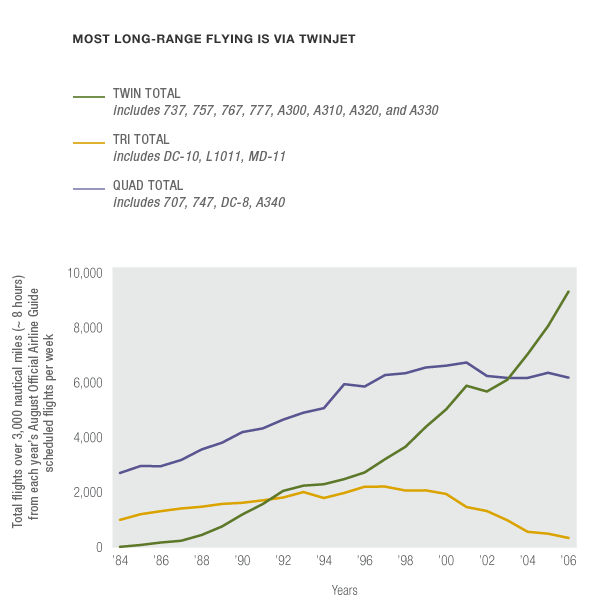

CONCLUSION
This new U.S. ETOPS rule ensures that air carriers performing twinjet extended operations, or three- and four-engine passenger jet extended operations, will have the requisite experience and ability to maintain and operate these airplanes at the required level of reliability and competence. This rule further provides for ETOPS beyond 180 minutes, and it allows the operators of approved long-range twinjets to fly optimal routings between virtually any two cities on earth.
On the operational front, this rulemaking ensures the availability of alternate airports as well as sufficient reserve fuel to reach these airports even under the most challenging circumstances. Furthermore, it ensures the availability of rescue and firefighting services, and requires that operators plan for the safety, comfort, and prompt retrieval of stranded passengers.
On the design front, the new ETOPS rule continues to reduce the rate of airplane propulsion and system failures that might cause a diversion. Moreover, it ensures that all time-limited ETOPS airplane systems will support worst-case scenarios by remaining continuously available throughout a maximum-duration diversion to the limit of that flight's authority. For more information, please contact Mohan Pandey at mohan.r.pandey@boeing.com
| 1 | U.S. Federal Register, Washington, DC, vol. 72, no. 9, January 16, 2007, p. 1836. |
| 2 | Ibid., p. 1816. |
| 3 | ICAO Annex 14, Volume 1, Aerodrome Design and Operations. |
